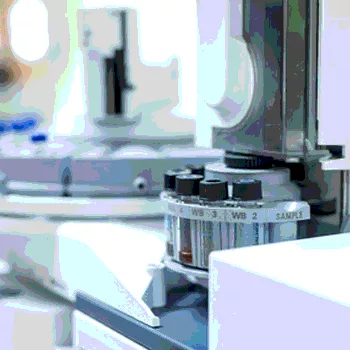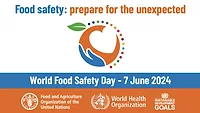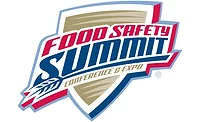Detect the Unexpected: Why Tomorrow’s Pesticide Workflows Will Rely On Full Scan Technology

Targeted pesticide residue quantitation is an essential and well-established role of the food safety laboratory. Determining the levels of pesticides in food samples against specific target lists helps authorities ensure that products comply with legislation under maximum residue limits and ultimately safeguard consumer wellbeing.
Separation technologies such as liquid and gas chromatography, coupled with triple quadrupole (QqQ) mass spectrometry have traditionally been the workhorses of routine pesticide quantitation workflows. The high sensitivity and robustness of these QqQ detection methods have made them a reliable tool for targeted analysis.
However, new pesticides are constantly being developed and deployed around the world. Other contaminants, previously undetected in food samples and not on target lists, can appear in products through environmental or manufacturing contamination. The increased complexity and global nature of food supply chains means that there is a greater risk that the food on our plates could come into contact with these novel analytes.
As a result, food safety laboratories are not only left with an ever-increasing number of analytes to screen for—they must always be on the lookout for new threats too. Of course, all of this must be done with high turnaround times and at a competitive cost per sample.
The challenge for food safety laboratories is therefore to find ways of efficiently combining targeted workflows with characterization analysis. In other words, to make identifying unknown compounds as routine and convenient as conventional quantitation.
Multi-Residue Screening
For many food safety laboratories, the solution to these challenges will involve the wider implementation of full scan approaches into routine workflows.
The latest multi-residue screening approaches based on high-resolution accurate mass (HRAM) are capable of analyzing multiple components in a sample simultaneously, enabling both targeted quantitation and non-targeted analysis in a single analysis. As a result, a growing number of national reference laboratories, including the Swedish National Food Agency, are introducing Thermo Scientific Orbitrap mass analyzer technology into their pesticide workflows.
For many laboratories focused primarily on routine targeted quantitation, the potential to combine multiple pesticide quantitation workflows in a single run will give productivity a major boost. With over 300 target analytes to screen for in some food products, the ability to screen for large numbers of residues at the same time will help laboratories to increase throughput and boost efficiency.
Full-scan approaches also enable laboratories to combine pesticide workflows with other types of analyte workflows, such as mycotoxins or antibiotics.[1] Using full scan technology, a laboratory could potentially perform routine quantitation of all three types of residue simultaneously. Similarly, for veterinary drug residue screening, where benzimidazoles, tranquilizers, corticosteroids and penicillins are routinely analyzed in separate workflows, a single comprehensive workflow would be significantly more efficient. The time, resources and costs saved by combining these workflows could be used to screen a wider range of samples, helping to further protect consumer safety.
The Unusual Suspects
For a large number of food safety laboratories, routine quantitation is only half the story. Identification of unknown compounds is one of the most challenging aspects of pesticide screening workflows—and the source of these unexpected analytes may surprise you.
As a hypothetical example, let’s consider goats’ cheese imported from third country. What if the goat, grazing on the hillside, ingests the leaves of a cannabis plant? The cannabinoids would end up in the milk, and as a result, the cheese.[2] For many quantitation workflows, cannabinoids are not on the target list, and their presence would not be detected.
Full-scan Orbitrap mass analyzer approaches are able to screen a much broader range of analytes in a sample, meaning the search is not limited to a specific target list.
One planned project that our laboratory is currently involved with includes the identification of unknown impurities in imported foods using Orbitrap mass analyzer technology. Sweden, just like many European countries, imports fish farmed in the Mekong—a river running through multiple countries in Southeast Asia.[3] This river is known to contain a very diverse range of pollutants, many of which are not covered on routine target lists.
Using the Thermo Scientific Q Exactive Focus Hybrid Quadrupole-Orbitrap mass spectrometer, we are able to cast our net much wider for contaminants, and analyze a very broad range of compounds in a single workflow. With the right tools and some detective work, we can identify and quantify these unexpected analytes at the same time as performing routine quantitation.
Of course, this detective work requires the right tools. Because of their ability to analyze such a broad range of compounds simultaneously, full scan approaches can generate significantly more data than conventional techniques. To make sense of these large datasets and narrow down the identification of unknowns, software that can rapidly process results and cross-reference against spectral and structure databases is essential.
Analysis tools that can automatically search against cloud-based Orbitrap mass analyzer spectral libraries can make this task much easier. Software such as Thermo Scientific Compound Discoverer and Thermo Scientific Sample Profiler can match fragmentation spectra against the mzCloud spectral library, which is regularly updated with pesticides and other analytes of interest. They can also narrow down compound searches by molecular weight or formula using databases such as ChemSpider, or those from our own or partner laboratories.
Residue Recovery
Full scan analysis workflows based on Orbitrap mass analyzer technology have the potential to quantify a large number of food contaminants faster and more efficiently than can be achieved using conventional QqQ technology. However, the methods used to analyze samples are only as good as the procedures used to prepare them.
With a range of polar and non-polar contaminants potentially present in food samples, it is essential that preparation approaches are able to extract a very broad range of analytes. However, it can be challenging to develop methods that are both comprehensive and convenient to use.
The main extraction techniques used today are making high-moisture food sample preparation faster and more straightforward. Approaches such as the QuEChERS (Quick, Easy, Cheap, Effective, Rugged, Safe), SweEt (Swedish Ethyl acetate) and Dutch Mini-Luke methods are amenable to a wide range of matrices and offer a number of advantages over traditional sample preparation techniques.
Previously, approaches required large amounts of solvents and sample, and often involved multiple extraction steps. In contrast, the SweEt method, developed at the Swedish National Food Agency, involves a single ethyl acetate extraction procedure, after which the sample can be injected directly for analysis. Such approaches are cutting preparation time and allowing labs to analyze a greater number of samples using fewer resources.
Conclusion
Tomorrow’s food safety workflows will increasingly rely on full scan approaches based on multi-residue Orbitrap mass analyzer technology methods due to their ability to effectively analyze multiple components simultaneously. When combined with powerful data analysis software and comprehensive residue recovery steps, full scan mass spectrometry approaches can simplify workflows and make multi-residue screening more efficient. Such technologies are helping food safety laboratories move beyond routine quantification to detect the unexpected.
Susanne Ekroth is a Chemist at the Swedish National Food Agency. She develops multi-residue methods for food and water workflows, screening for pesticides, toxins and food contact materials.
References
1. De Dominicis E et al. 2015. “Quantitative Targeted and Retrospective Data Analysis of Relevant Pesticides, Antibiotics and Mycotoxins in Bakery Products by Liquid Chromatography-Single-Stage Orbitrap Mass Spectrometry.” Food Addit Contam: Part A 1617–1627.
2. EFSA. 2008. “Tropane Alkaloids (from Datura spp.) as Undesirable Substances in Animal Feed. Scientific Opinion of the Panel on Contaminants in the Food Chain.” EFSA J 691:1-55.
3. Murk Albertinka J et al. 2016. “Perceived versus Real Toxicological Safety of Pangasius Catfish: A Review Modifying Market Perspectives.” Aquaculture 1-12
Looking for quick answers on food safety topics?
Try Ask FSM, our new smart AI search tool.
Ask FSM →







